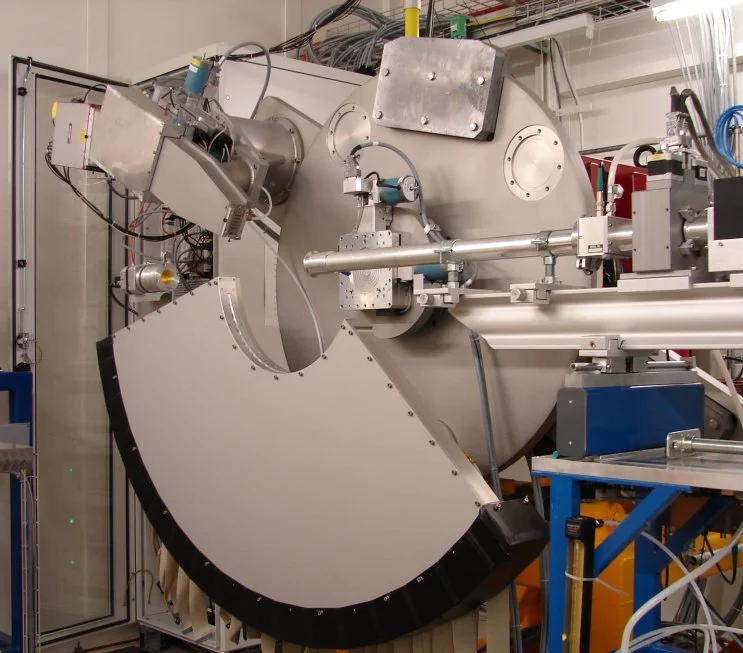The ADDAMS 1D Powder Diffractometer is equipped with a MYTHEN III microstrip detector. It is described in this open access paper.
MYTHEN III
The powder diffractometer is equipped with the third generation MYTHEN II microstrip detector, constructed in house for time-resolved measurements and rapid acquisition of overview diffraction patterns.
This MYTHEN 1-D detector covers an angular range of 120° using two strips each of 30'720 silicon elements, divided up into 24 modules of 1280 elements each (see Fig. 4). In contrast to spectra recorded using the analyzer detectors, the angular resolution is determined for all but the smallest samples by the size of that sample (typically a 0.2 mm capillary).
Although the microstrip detector is susceptible to air- and window-scattering near the sample, its approximately 0.3 keV energy resolution provides some degree of inelastic rejection. Each channel can count up to 3 MHz and has a dynamic range of 224 (16 Mcounts), with effectively zero dark noise. The entire angular range of the detector can be read out in a few milliseconds. The present maximum frame rate is 5 Hz, but it is planned that in the future a frame rate of 10 kHz will be possible.
The Instrumental Profile of MYTHEN detector in Debye Scherrer geometry has been recently performed and can be found in Gozzo et al, ZKrist, 2010.
A. Cervellino, July 2025

